This article was co-authored by Chris M. Matsko, MD. Dr. Chris M. Matsko is a retired physician based in Pittsburgh, Pennsylvania. With over 25 years of medical research experience, Dr. Matsko was awarded the Pittsburgh Cornell University Leadership Award for Excellence. He holds a BS in Nutritional Science from Cornell University and an MD from the Temple University School of Medicine in 2007. Dr. Matsko earned a Research Writing Certification from the American Medical Writers Association (AMWA) in 2016 and a Medical Writing & Editing Certification from the University of Chicago in 2017.
There are 7 references cited in this article, which can be found at the bottom of the page.
This article has been viewed 50,023 times.
Cat scratch disease, also known as cat scratch fever, is the most common disease spread by cats. It is the result of the bacteria Bartonella henselae and is spread by a cat either biting or scratching, or by licking an open wound.[1] It is particularly prevalent among young cats and cats with fleas. For most, the disease is not severe and should clear up without medical treatment. However, it can be more complicated for children and those with compromised immune systems, and may require antibiotics. Recognizing the symptoms of cat scratch disease can ensure that those who are infected receive the medical care they need.
Steps
Recognizing Common Symptoms
-
1Check for redness and swelling. The first sign that a wound might be infected is redness and inflammation around the site of the wound. This can occur anywhere from three to 14 days after coming in contact with a cat.[2]
- Visit a doctor if you believe that you have cat scratch fever.
-
2Observe any papule or pustules. You may notice the growth of small blisters or lesions around the site of the wound. These open sores or pus-filled pimples are also indicative of an infection and will appear less than two weeks after contamination.[3]
- Do not pop or burst the pustules. This may cause the spread of the infection.
Advertisement -
3Look for swollen lymph nodes. One to three weeks after exposure to B. henselae, your lymph nodes closest the infection site will be swollen and painful. These will be most common around the head, neck, and upper limbs. Look for small round bumps near the bite or scratch.[4]
-
4Keep an eye out for fatigue. If you are experiencing a cat scratch disease, you may become more tired than normal. You will generally feel tired, even after a restful night of sleep, and become fatigued more quickly while doing tasks.[5]
- Avoid over-exertion if you experience fatigue and be sure to get plenty of rest.
-
5Treat any headaches. Cat scratch disease can cause you to suffer from a headache, which will appear a few days after exposure. Use the recommended dosage of acetaminophen or other pain relievers to deal with headaches.[6]
-
6Manage a low-grade fever. A mild fever may also develop as a result of the infection. Your temperature will run somewhere between 99 and 101 degrees. Fever is a relatively common symptom of cat scratch disease, but not considered severe.[7]
- Use pain relievers or fever reduces to manage the fever.
- Visit a doctor if your fever worsens.
Identifying Severe Complications
-
1Observe severe muscle or joint pain. A very small number of those infected with cat scratch disease develop joint and muscle pain. Those reporting muscle and joint soreness tended to be under the age of 20. If untreated, this can result in chronic tendinitis, as well as persistent muscle and joint pain.[8]
- Contact your doctor if you experience and joint or muscle soreness associated cat scratch disease.
-
2Check for redness of eyes and blurred vision. In rare instances, cat scratch disease has been known to cause decreased vision and a limited visual field.[9]
- Contact your doctor if you experience any difficultly seeing or changes in your vision.
- This tends to clear up with a dose of antibiotics.
-
3Look for lesions. In people with compromised immune systems, B. henselae can cause bacillary angiomatosis, a disease characterized by lesions on the skin. This can present as sores in the skin, subcutaneous tissue, bone, or other organs. Lesions are particularly dangerous for people with compromised immune systems because they can increase the likelihood of infection.[10]
- This complication is most common among people with advanced HIV infection.
-
4Watch for neurological symptoms. You can develop encephalopathy (brain damage or malfunction), radiculopathy (local nerve injury), or ataxia (loss of muscle coordination) from cat scratch disease. Patients with and encephalopathy usually have confusion and disorientation. You may also have seizures or other neurological problems.[11]
- Most symptoms typically resolve after treatment, but some people are left with residual neurological defects from cat scratch fever.
-
5Check for blood in your urine. B. henselae can cause a bacillary peliosis, which is a vascular infection of the spleen or liver. If you have bacillary peliosis, you would have small blood in your urine, which might cause a darker discoloration. If untreated, this infection can result in a significant deterioration in health among those with compromised immune systems.[12]
- This complication is found almost exclusively among people with advanced HIV infection.
Preventing Cat Scratch Disease
-
1Wash cat scratches and bites immediately. If you are bitten or scratched by a cat, wash the wound with hot water and soap right away. This will wash away or kill any bacteria that may cause and infection.[13]
- You may also want to disinfect it and apply a bandage to further clean the wound and prevent and further infection.
-
2Clean hands after playing with cats. If you work with young children or people who have compromised immune systems, be sure to wash your hands after handling any cats. You may get B. henselae on your hands and transmit it to others through touch, especially if they have an open wound.[14]
- Always wear gloves when working around people with open wounds or infectious diseases.
-
3Get cats older than one. Because young cats are more likely to carry the disease, people with compromised immune systems should get cats older than one. This will minimize the likelihood of an infection.[15]
- Your local shelter or pet store should be able to help you find a cat that will work best for you.
-
4Play gently with cats. Rough housing with your cat increases the likelihood that they will bite or scratch you. Your cat may not know that you are playing and get agitated.[16]
-
5Control fleas. Because B. henselae is transmitted from fleas to cats to humans, you can constrain the spread of cat scratch disease by limiting your cat's exposure to fleas. Apply a flea product to your cat and check its fur for fleas regularly. Also, keep your home flea-free by vacuuming regularly and contacting pest control if you notice any fleas.[17]
- Some over the counter flea guards can be harmful to your cat. Consult your veterinarian before applying any product to your cat.
-
6Take your cat to the veterinarian. You can also help ensure your cat's health by scheduling regular checkups with your vet. They can test for cat scratch disease and give you advice on how to limit your exposure to the disease.[18]
Warnings
- If you are bitten by a cat or another animal, see a doctor to get treatment for the wound and to make sure that you don't have rabies. You may also need to get a tetanus if it has been more than five years since your last tetanus vaccination.⧼thumbs_response⧽
References
- ↑ https://www.cdc.gov/healthypets/diseases/cat-scratch.html
- ↑ https://familydoctor.org/condition/cat-scratch-disease/
- ↑ https://familydoctor.org/condition/cat-scratch-disease/
- ↑ https://familydoctor.org/condition/cat-scratch-disease/
- ↑ https://www.hopkinsmedicine.org/health/conditions-and-diseases/cat-scratch-disease
- ↑ https://www.mayoclinic.org/diseases-conditions/chronic-daily-headaches/in-depth/headaches/art-20047375
- ↑ http://www.cdc.gov/healthypets/diseases/cat-scratch.html
- ↑ https://www.hopkinsmedicine.org/health/conditions-and-diseases/cat-scratch-disease
- ↑ https://www.ncbi.nlm.nih.gov/pmc/articles/PMC1079239/
- ↑ https://www.hopkinsmedicine.org/health/conditions-and-diseases/cat-scratch-disease
- ↑ https://www.aafp.org/afp/2011/0115/p152.html
- ↑ https://www.aafp.org/afp/2011/0115/p152.html
- ↑ https://www.hopkinsmedicine.org/health/conditions-and-diseases/cat-scratch-disease
- ↑ https://familydoctor.org/condition/cat-scratch-disease/
- ↑ https://familydoctor.org/condition/cat-scratch-disease/
- ↑ http://www.cdc.gov/healthypets/diseases/cat-scratch.html
- ↑ http://www.cdc.gov/healthypets/diseases/cat-scratch.html
- ↑ http://www.cdc.gov/healthypets/diseases/cat-scratch.html
About This Article
To recognize the symptoms of cat scratch disease, look for redness and swelling around the site of the wound, which usually takes between 3 and 14 days to develop. You should also keep an eye out for blisters or lesions around the wound. Cat scratch disease can also cause fatigue, headaches, and fever, so monitor yourself for those symptoms as well. In rare cases, you may experience more serious symptoms, like severe muscle pain, blurred vision, red eyes, confusion, seizures, or bloody urine. If you experience either minor or severe symptoms, contact your doctor right away. For advice from our Medical co-author, like how to prevent cat scratch disease, keep reading.


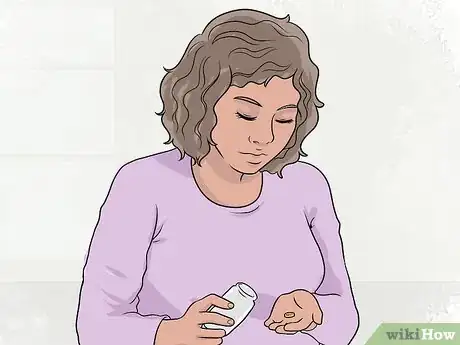



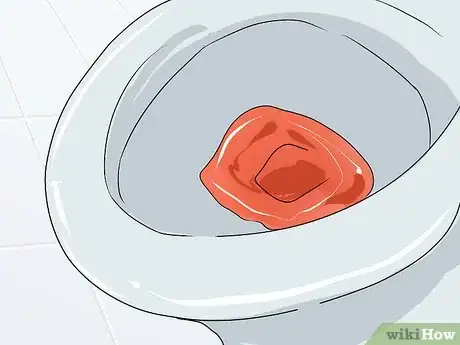




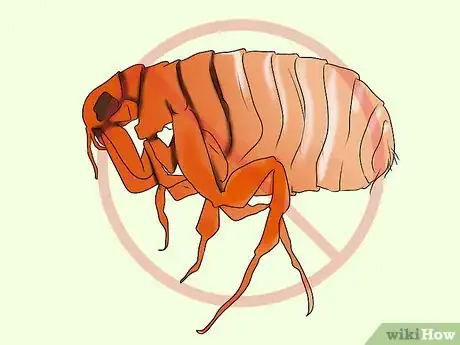
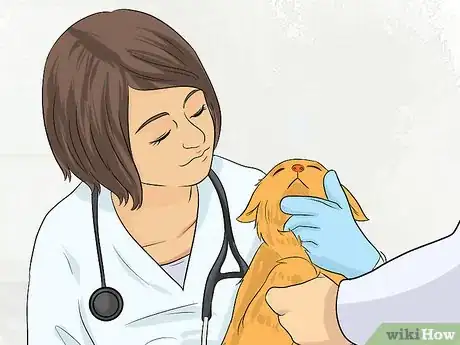

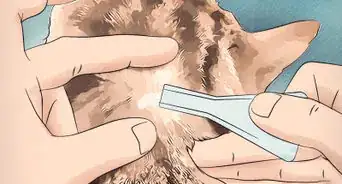









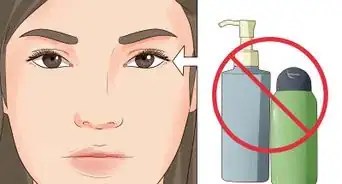
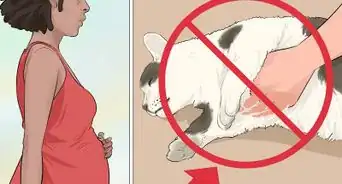










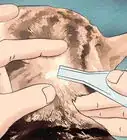






































Medical Disclaimer
The content of this article is not intended to be a substitute for professional medical advice, examination, diagnosis, or treatment. You should always contact your doctor or other qualified healthcare professional before starting, changing, or stopping any kind of health treatment.
Read More...